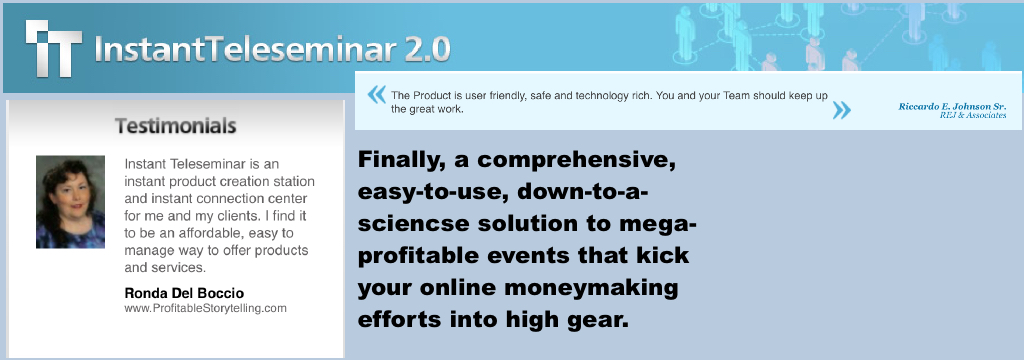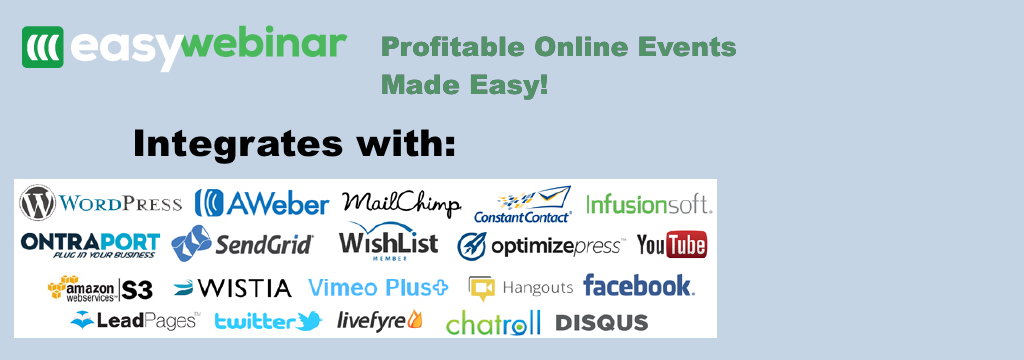Teleseminar Services are an electronic alternative to attending a physical seminar. This approach to education, career development and information dissemination has numerous advantages. Some of these are listed below.
Advantages for Attendees:
– Transportation costs are eliminated. This is especially important when current gasoline prices are taken into consideration.
– Attendees do not need to pay as large a fee to attend. This is because they are only reserving a slot in a digital communications channel. Ordinarily, the attendee would be paying for his share of the conference room, catering and potentially a hotel room.
– Attendees can receive information and interact while working on other tasks. This is, to many people, more relaxing. It helps to save valuable work time, which could improve profits.
Advantages for Seminar Hosts:
– The cost of hosting a seminar is drastically reduced. It is not necessary to book a large venue such as a hotel conference room, catering is not needed and transportation costs for seminar staff are eliminated.
– Feedback can be more easily collected and reviewed at a later date. This is in contrast to attendees raising their hand to speak. Afterwards, this information would have to be manually recorded and reviewed. This is not only less efficient, it also introduces a great deal of potential for transcription and interpretation error.
Hardware and Software Required for Teleseminar Use
– A computer, tablet or high-end smart phone is typically required.
– Most teleseminar services are hosted on a service such as Skype, GoToMeeting or Google Plus. In the case of Google Plus and some specialized teleseminar software, support for the Adobe Flash format is vital. This is a feature only available on newer smart phones, such as those using ARM A8 and A9 Cortex processors. Most desktop and laptop computers are capable of running Flash content efficiently with just a simple software installation.
– An Internet connection such as Cable, DSL, Fiber or a T-Carrier line. Dial-up is not recommended. The best connection for teleseminar use provides at least 8 megabits of downlink bandwidth and at least 2 megabits of upstream bandwidth. Ideally, clients will be able to “ping” to the server and back with a latency under 100 milliseconds.
Getting the Best Teleseminar Performance
An inadequately optimized computer or network connection can result in poor performance during a teleseminar. The following tips will help you to achieve higher frame rates, less compression artifacts and higher-quality audio sampling.
– End all unnecessary processes. These can put a detrimental burden on the CPU and system memory.
– Check network traffic in your operating system’s “Resource Monitor”. The Network tab will allow you to view uplink and downlink traffic on a per-process basis. Custom software also exists to throttle back other applications’ utilization of the Internet connection. By doing this, you will be able to maximize bandwidth available to the teleseminar software. Note that in some browsers, flash-based teleseminar interfaces will not show their CPU, memory and network utilization in the browser’s process itself. Instead, look for a daughter process with a name like “Plugin-Container”. In the case of Java-based teleseminar software, look for a process with a name like “JRE”, which stands for “Java Runtime Environment”.
– Configure your teleseminar software to match your available Internet connection speed. You can approximate this by using an online speed test.
Article by B. Â Hopkins
Related articles
– Teleseminars today are Quickly growing in popularity; with the convenience and the low-cost and ability to easily hold large scale events. A teleseminar -also known as a webinar- Is a fantastic way for you to promote your business. Teleseminar systems nowadays offer you a better means of increasing your chances to find new customers, and..
Webinar and Teleseminar Resources
Create Residual Revenue From Your Webinars Tags: Teleseminar, teleseminar services Posted by






